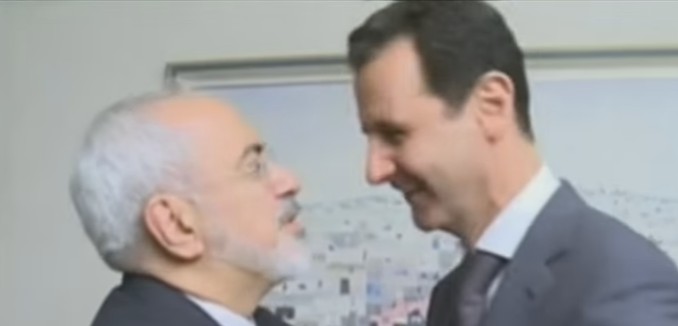The regime of Iran-backed Syrian dictator Bashar al-Assad has engaged in a systematic campaign of ethnically cleansing Sunnis from the capital of Damascus, in order to strengthen Assad’s hold on his strife-torn country and realize Iran’s ambition of creating a Shiite crescent in the Middle East, an analysis published Thursday by the Washington Institute for Near East Policy asserted.
Hanin Ghaddar, a fellow of the institute and a veteran Lebanese journalist, observed that Assad’s forces captured the largely Sunni suburb of Daraya in August after convincing 8,000 residents to leave. The remaining residents surrendered following intense bombardment and denial of access to food and medical needs. Ghaddar called the regime’s tactics “starve or surrender,” and noted that following the surrender of Daraya, the regime targeted two more Sunni areas with threats of “total war” if they did not surrender. Now, she wrote, “Assad seems to be moving from ‘starve or surrender’ to ‘war or surrender’ tactics in order to eliminate any Sunni presence around Damascus as soon as possible.”
Ghaddar predicted that this campaign will continue, with Sunnis living in other areas around Damascus being forced out as well. They may be replaced by Shiites in an effort to change the religious balance of the area: Arab media have reported this week that some 300 Shiite families from Iraq have been resettled in the emptied Damascus suburbs and given $2,000 each, Ghaddar wrote. The transfer was allegedly supervised by one of the Iraqi Shiite militias that works closely with Iran.
Bashar al-Assad’s father and predecessor Hafez did something similar during his rule, moving Alawites — the sect to which the Assads belong — into Damascus and the surrounding areas as a means of solidifying his rule. “Bashar,” Ghaddar noted, “now appears to be escalating his father’s strategy into the realm of ethnic cleansing.”
Iran, one of Assad’s main allies and benefactors, is also committed to achieving ethnicity-related goals in Syria. Ghaddar explained:
As a result of these efforts, the corridor linking Qalamoun to Damascus, Homs, and the Alawite enclave may soon be Sunni-free. In addition to shielding the capital from the mainly Sunni anti-Assad forces, this development would give Hezbollah safe access to the Golan Heights, potentially allowing the group to open another front against Israel. Iran could also use its reinforced grip over Syria and Lebanon to project more power against Israel, whether by supporting Hezbollah in the Golan or increasing its assistance to Palestinian groups like Hamas. Indeed, this corridor should be viewed in a regional context — it would link Iran, Iraq, and the almost-complete “useful Syria” to the Beqa Valley and southern Hezbollah military stronghold in Lebanon, and Tehran’s Shiite-controlled crescent would be whole. (Although there would be no territorial link between this part of Syria and Iraq, preserving Iranian-backed governments in Baghdad, Damascus, and Beirut would allow Tehran to create a political contiguity sufficient to fulfill its goals.)
Because of this, Ghaddar wrote, any peace agreement must “recognize the dangers of Iranian regional hegemony.” Sunnis make up a majority of the Middle East and the Sunni nations would feel threatened by “an Iranian Shiite crescent that envelops several countries,” which would exacerbate sectarian tensions as well as possibly prompt ISIS and al-Qaeda affiliate Jabhat al-Nusra to target the Shiite-controlled region.
Reports of ethnic cleansing by Iran and Syria go back at least a year.
[Photo: FRANCE 24 English / YouTube ]




